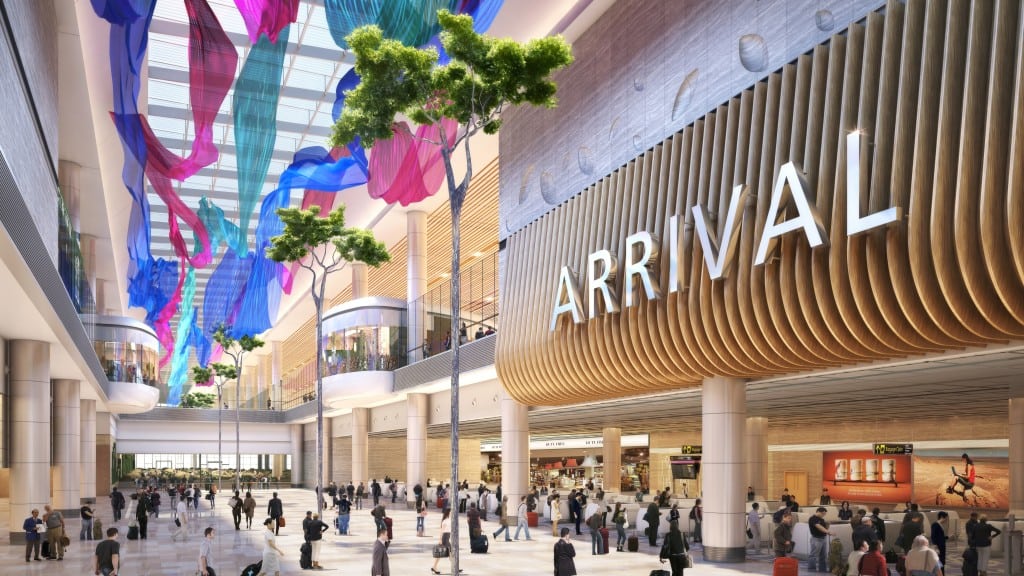Skift Take
Technology promises to improve the passenger experience around the world, with projects ongoing in every region, but dramatic growth in Asia makes it the perfect testing ground for cutting-edge programs.
As passenger numbers continue to rise, airports around the world are challenged to meet demand.
In Asia, where most infrastructure has only been built in recent years, with new airports still under construction, incorporating the right technology has been essential.
Ilya Gutlin, President, Asia Pacific, SITA, tells us much of the push for advanced airport technology is the result of the rise of Asia’s low-cost carriers, which attract a young and tech savvy demographic. “You’re getting a lot of first time, maybe second time passengers,” he says. “These people are very technology savvy. Both Chinese and Indonesian travelers are using technology a lot more. They travel with a lot more technology than people in Europe or in North America. Airports are starting to look at technology and seeing that self-service means more service.”
Another advantage of putting technology to work in such a culturally diverse region is the simplification of the travel process, Gutlin points out. “The main issues in Asia are the first time travelers going to countries where they are not familiar with the language so that they can travel with a smile on their faces,” says Gutlin.
Technology serves the function of localization, letting new passengers feel at ease in foreign setting, taking the anxiety out of the journey for those unfamiliar with the process.
“You can start to adapt your offering to first time traveller in their own language,” he says. “A Chinese passenger isn’t dealing with Thai agent [at check-in], and is seeing a Mandarin screen at bag drop.”
With effective deployment, Gutlin says, “the technology behind all of this is seamless to the final passenger.”
And there is a lot of technology in place. Hundreds of kiosks to automate check-in, further complemented by automated baggage drop systems. Back-office common use systems manage all that data: passenger registrations, airport traffic, baggage tracking.
“To complement all of this is beacon trials,” says Gutlin. “In Hong Kong it got a lot of attention, not just from the airlines and the airport but from other tenants and those within the advertising community.” That’s because, once implemented, beacons open up myriad possibilities for applications, both operational and promotional.
The aviation industry is still in an exploratory stage with beacons, considering the many ways the Internet of Things will help improve service and potentially increase revenue. But airports like Miami International Airport and Hong Kong International Airport, are investing now to reap the benefits of this technology early.
The other key advantage of technology in Asia, says Gutlin, is that it helps airlines and airports provide a higher standard of personalized service—which Gutlin characterizes as a “relentless focus on the passenger”—complementary to the intrinsic service-mindset of the region.
For example: “Once a year, Changi hosts a passenger appreciation night and gives awards to vendors with heartwarming stories of employees helping passengers who are stranded, taking them to a house, to the hospital, going well beyond their duties to ensure that being helpful, ensuring the passenger has a pleasant experience,” Gutlin tells us.
At all points of the journey at Singapore Changi airport, from check-in through the security queue, to the shops and restaurants, even in the toilets, travelers will find happy-meter screens which let them quickly rate their satisfaction with that touch-point, from a very happy face to decidedly unhappy.
This ubiquitous and easily interpreted rating system, Gutlin tells us, accomplishes two things: ensuring personalized service in a digital landscape, and keeping the airport operations running smoothly.
“They don’t need supervisors walking around to see the state of their facilities, because they see feedback directly for themselves from passengers in real-time,” he says. “It’s a personal way with the customers and also a very efficient.”
The Daily Newsletter
Our daily coverage of the global travel industry. Written by editors and analysts from across Skift’s brands.
Have a confidential tip for Skift? Get in touch
Tags: airports, sita, technology
Photo credit: A double-level arrival hall greets flyers at Singapore Changi Airport. Changi Airport Group
